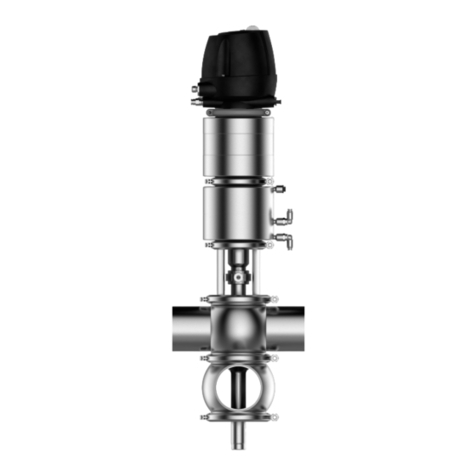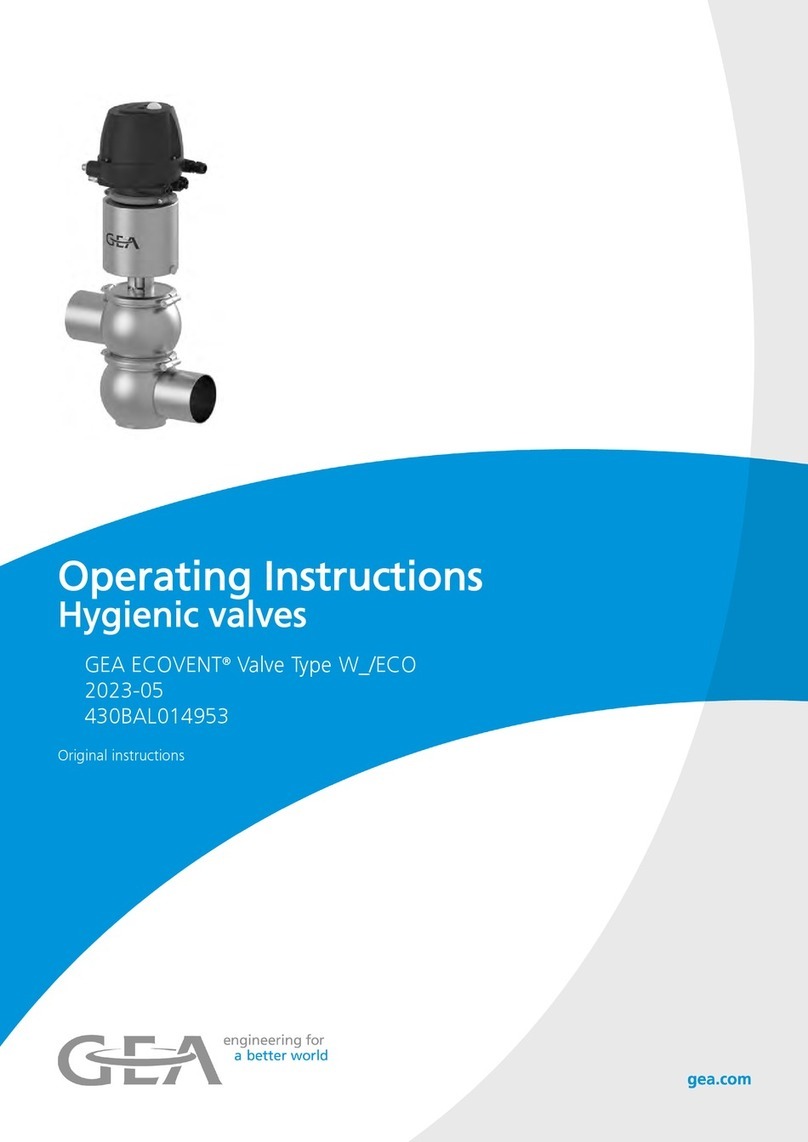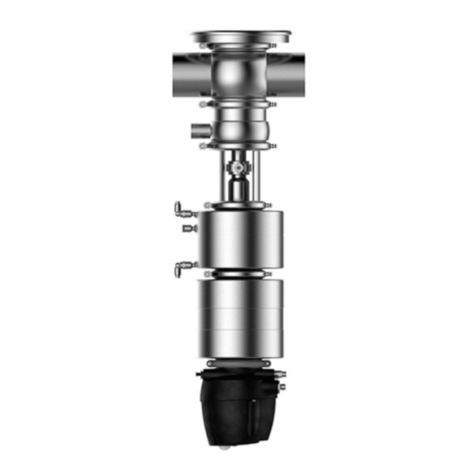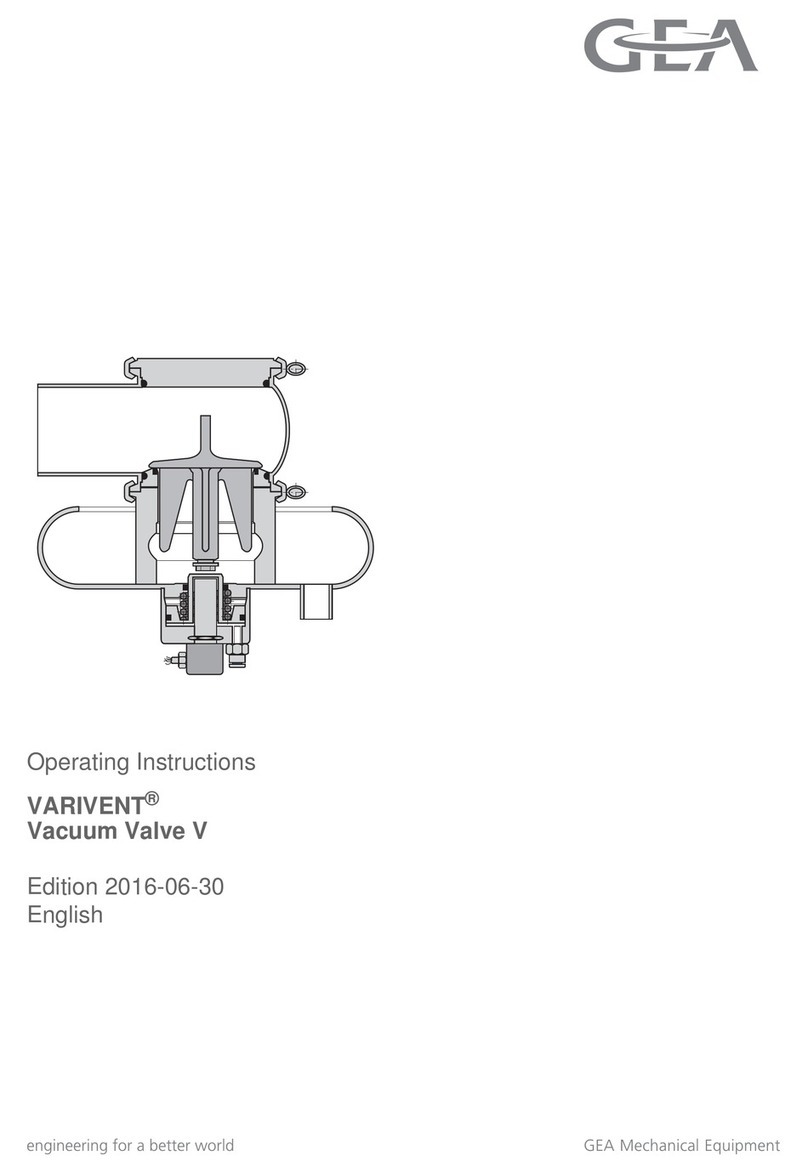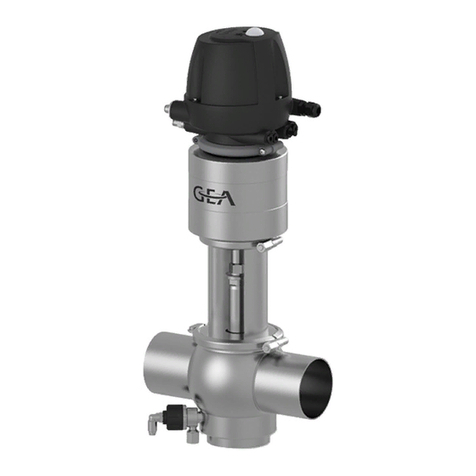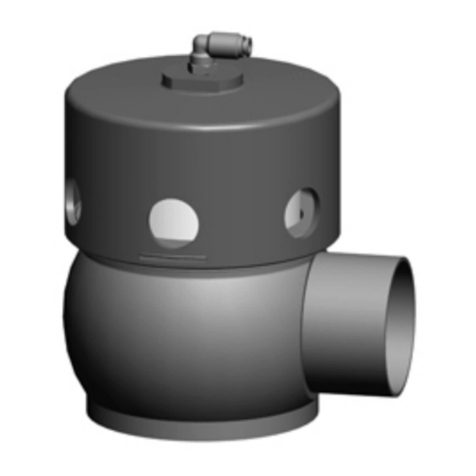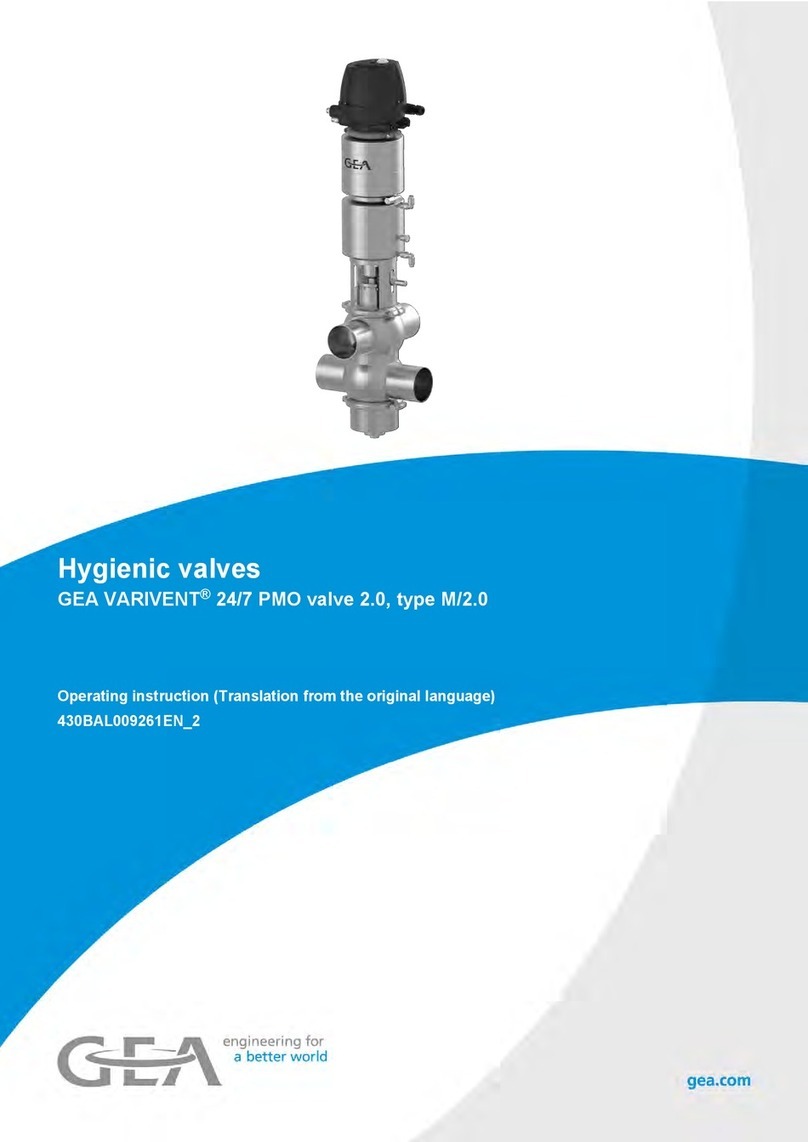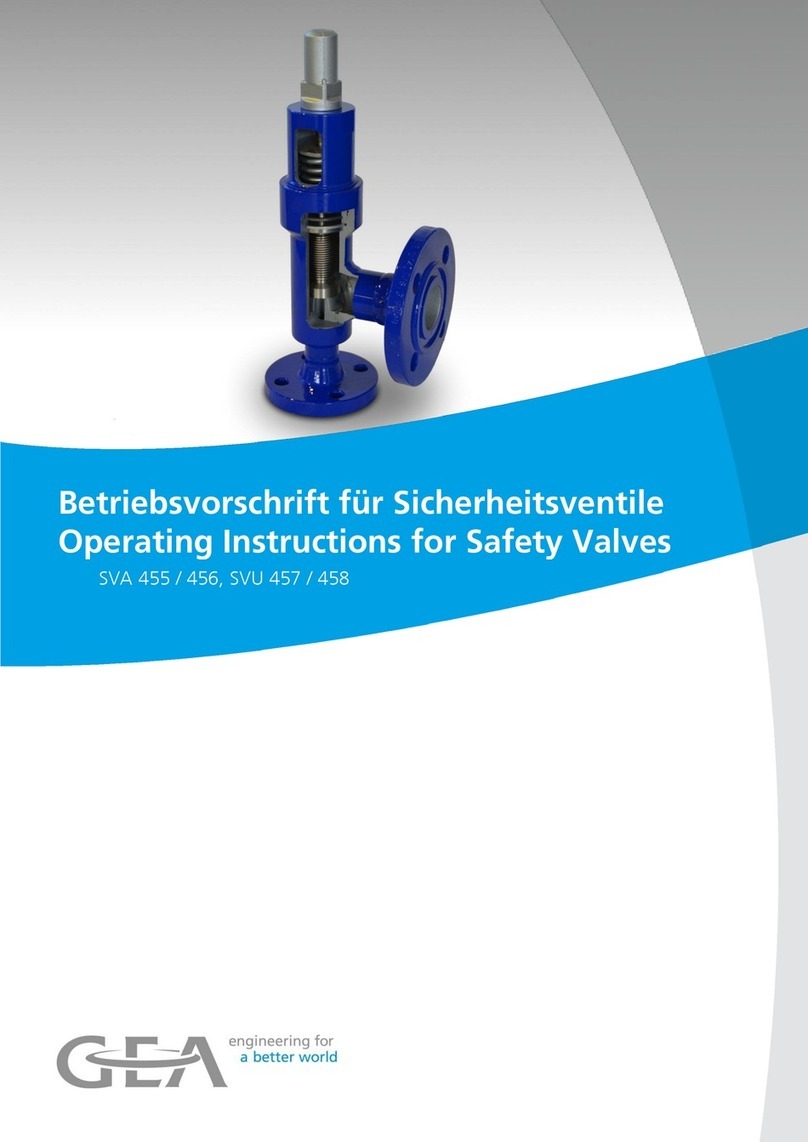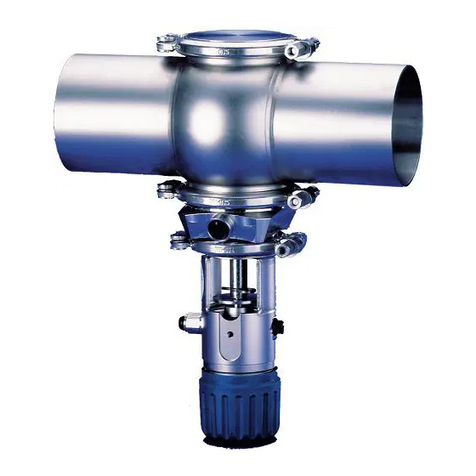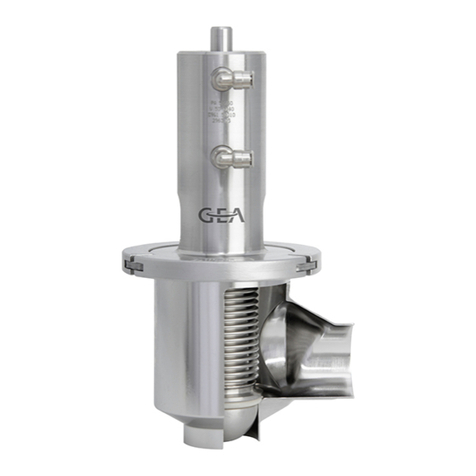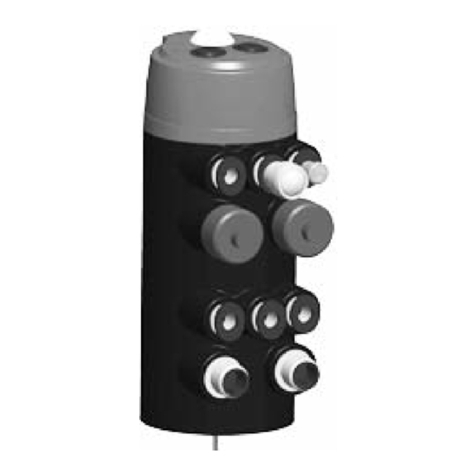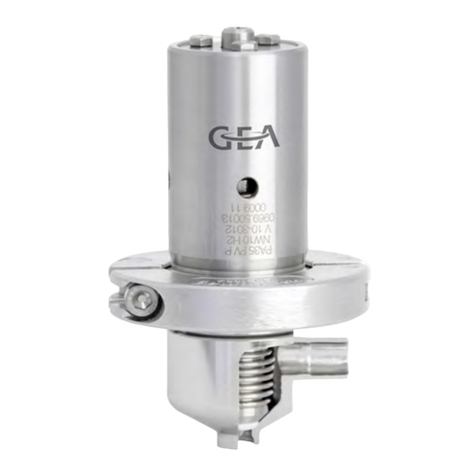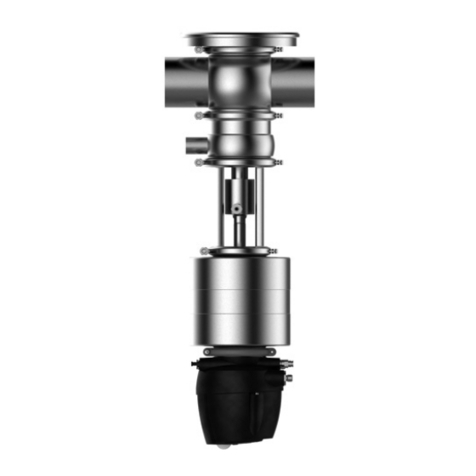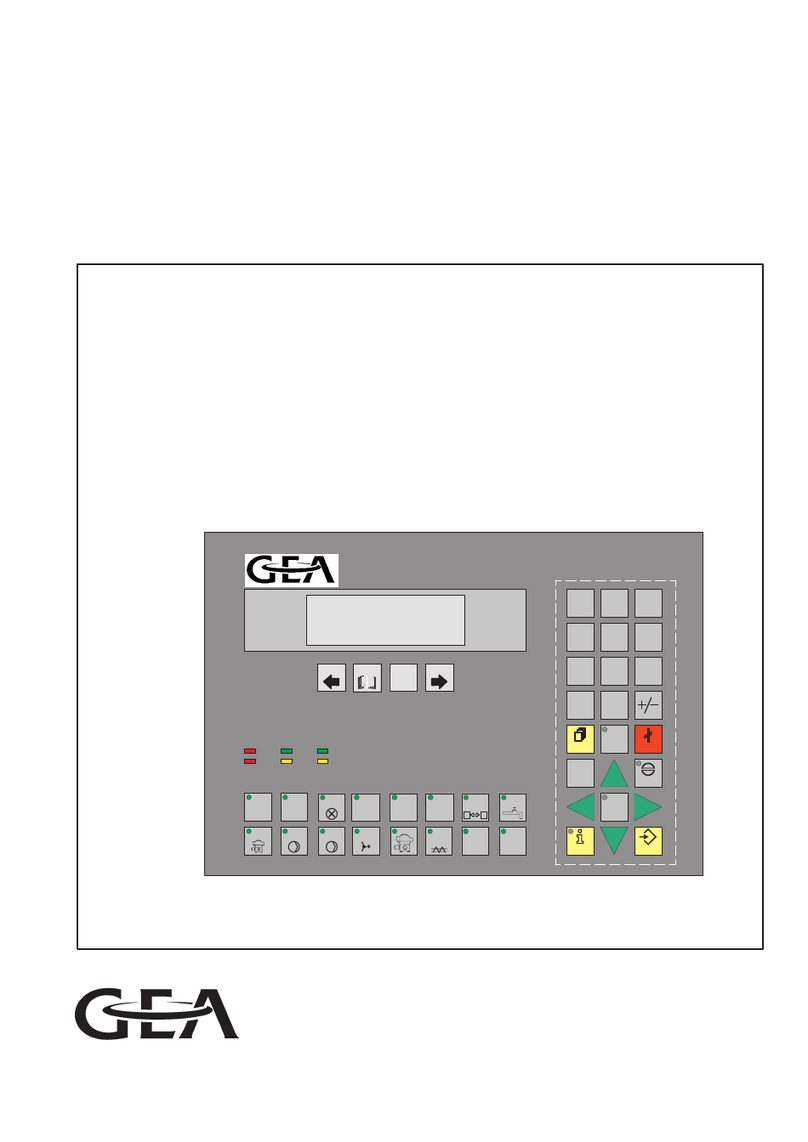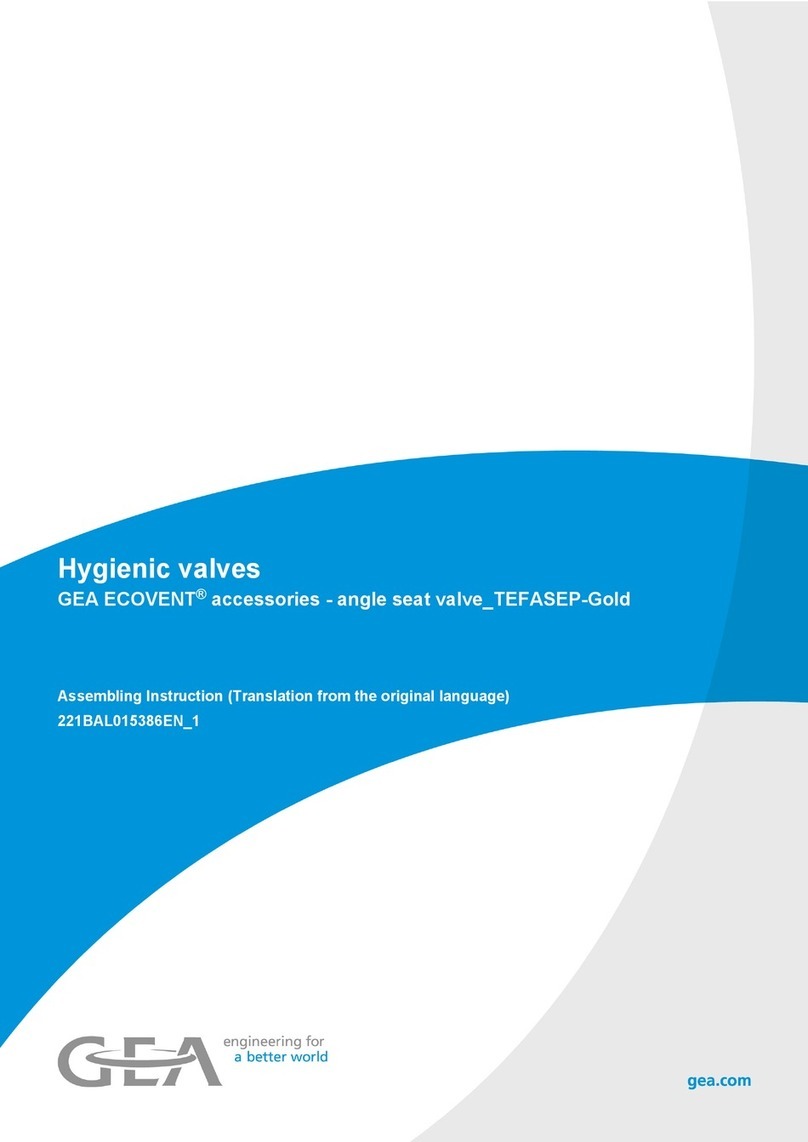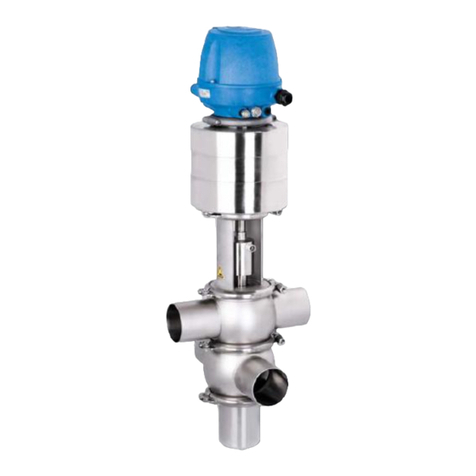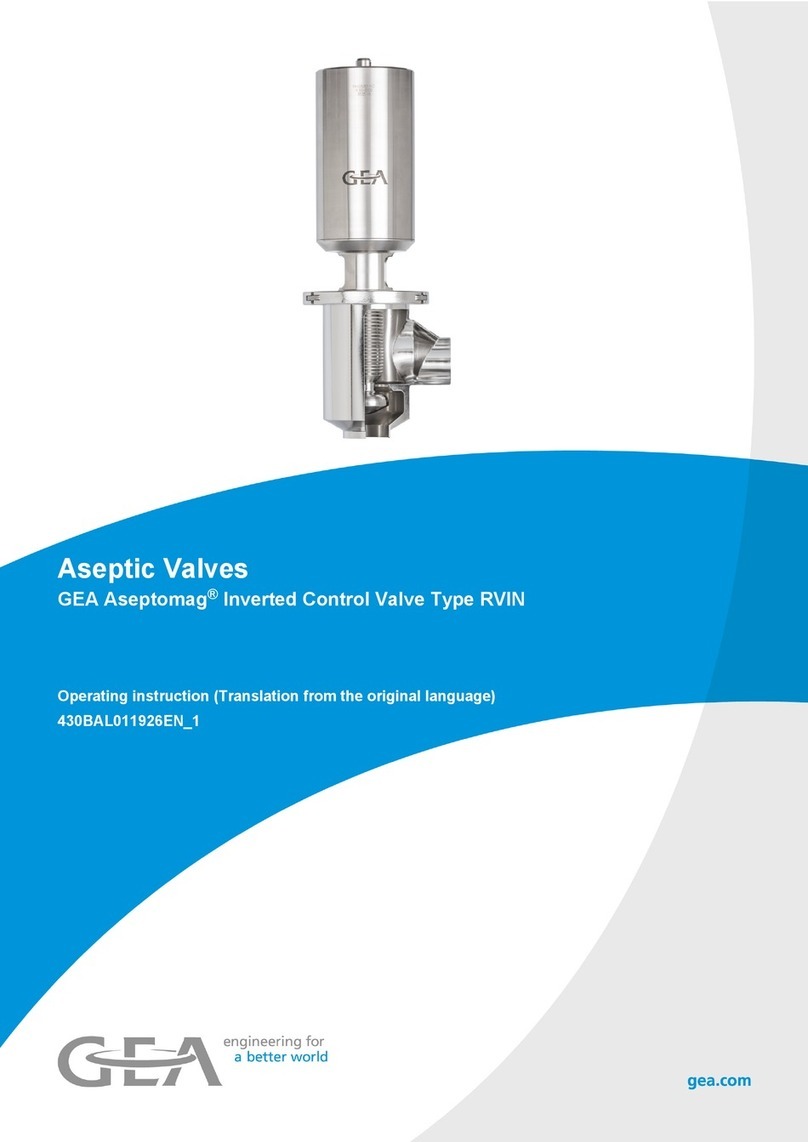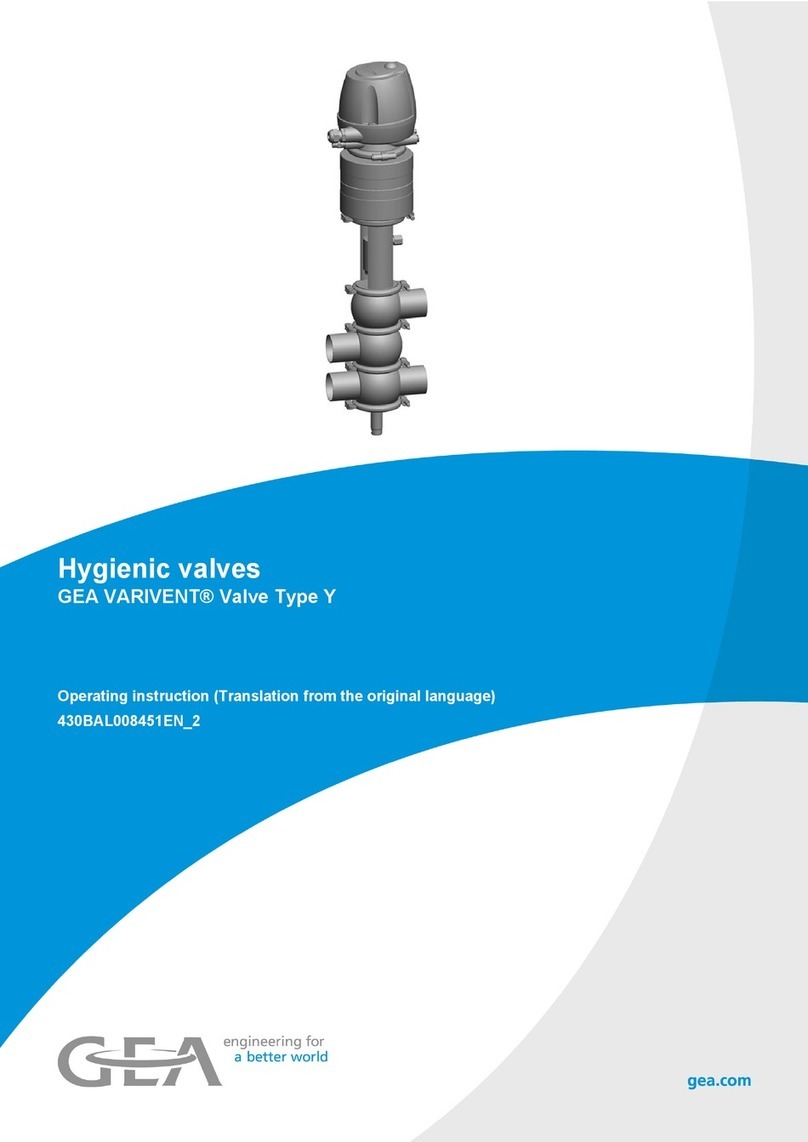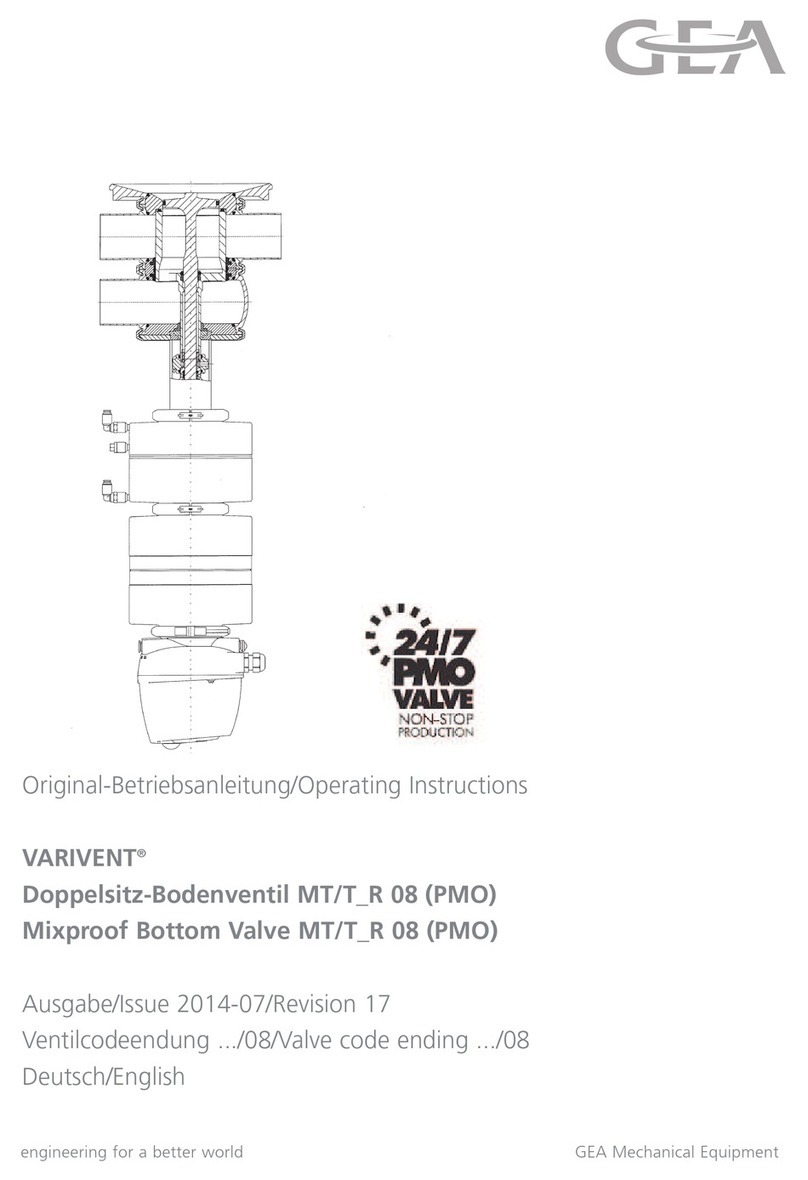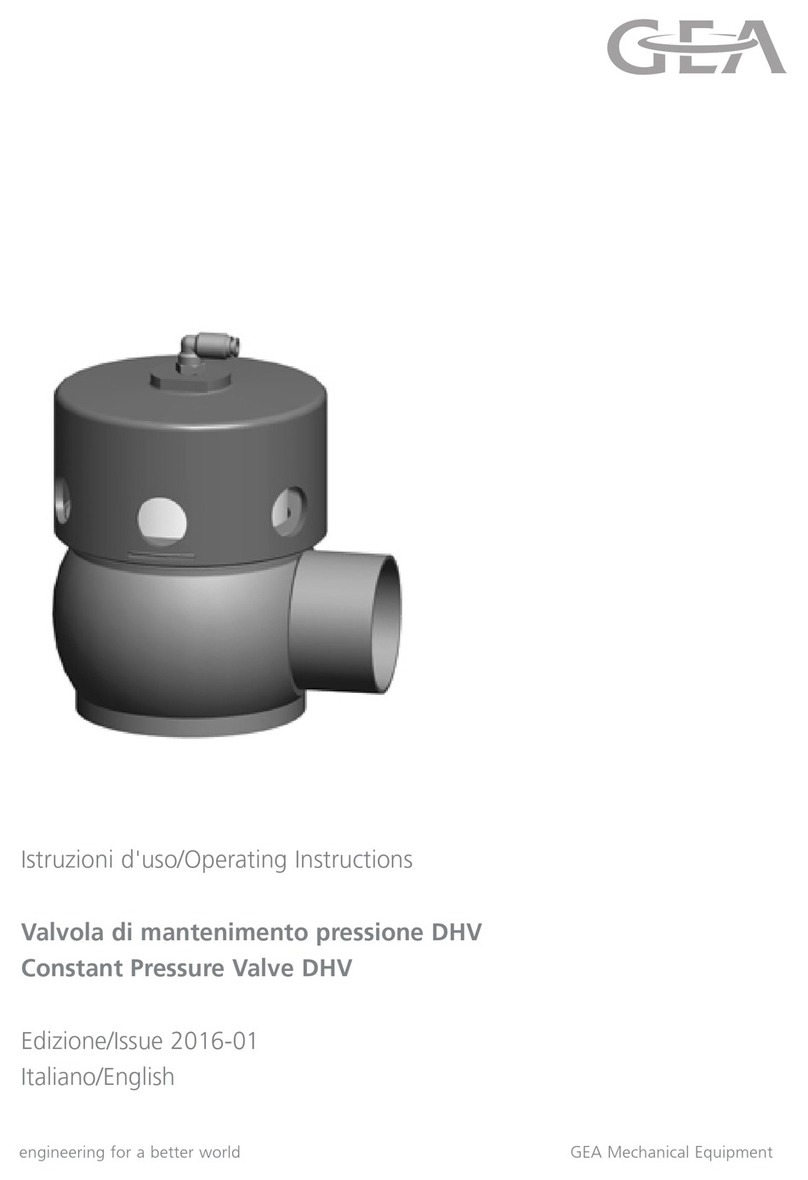
2.1.4 Improper operating conditions
The operational reliability of the valve cannot be ensured under improper
operating conditions. Therefore avoid improper operating conditions.
Operating the valve is not permitted if
•Persons or objects are in the danger zone.
•Safety devices are not working or were removed.
•Malfunctions have been detected on the valve.
•Damage has been detected on the valve.
•Maintenance intervals have been exceeded.
•the position of the side valves is not adjusted to the process steps
Hint!
Negative pressure and switching under negative pressure in the
pipeline can lead to damage to the membrane.
2.2 Operator’s Duty of Care
In your capacity as operator of the facility you bear a particular responsibility for
the proper and safe handling of the valve in your facility. Only use the valve when
it is in perfect condition to prevent danger to persons and property.
These Operating Instructions contain the information you and your staff need for
the safe and reliable operation during the entire service life of the valve. Be sure
to read these Operating Instructions carefully and ensure that the measures
described here are observed.
The operator's duty of care includes planning the necessary safety measures and
monitoring that these measures are observed. The following principles apply:
•Only allow qualified staff to work on the valve.
•The operator must authorize the staff to carry out the relevant tasks.
•Working areas and the entire environment of the valve must be neat and
clean.
•The staff must wear suitable work clothing and personal protective equipment.
As the operator of the facility make sure that work clothing and personal
protective equipment are used.
•Instruct the staff with regard to any properties of the product which might pose
a health risk and the preventative measures to be taken.
•Have a qualified first-aider on call during the operation, who can initiate the
necessary first-aid measures in case of an emergency.
•Clearly define processes, lines of authority and responsibilities associated
with the valve. Everybody must know what to do in case of an emergency.
Instruct the staff in this respect at regular intervals.
•The signs relating to the valve must always be complete and legible. Check,
clean and replace the signs as necessary at regular intervals.
Safety
Operator’s Duty of Care
430BAL013307EN_8
10 04.08.2022
